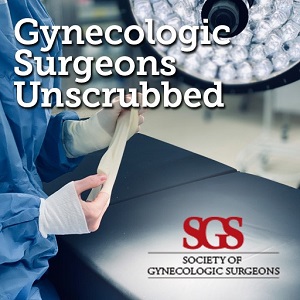PG Course 3
Sunday, July 12, 2020 | 10:00 am - 2:00 pm ET
“It’s All About The Apex” - The Key to Successful POP Surgery

Course Director: Charles Hanes, MD
Course Faculty:
Charles Hanes, MD, Cecile Ferrando, MD, Arnulfo Martinez, MD, Charles Rardin, MD,
and Edward Varner, MD
Learning Objectives:
At the conclusion of this activity, the participant should be able to:
- Determine which apical suspension to use.
- Select technique a surgeon is capable of doing if they discover that a vault suspension is needed at the time of POP repair.
- Determine what an ideal vault suspension operation should look like.
- Is there a role for biological grafts and if so, what?
- Determine when a concomitant perineorrhaphy should be done.
- Determine what to do about symptomatic failures in the anterior compartment or apical compartment.
Description of Course:
Identification of Apical Compartment Defects is often difficult and may be missed in the preoperative evaluation. As a result, the defect may not be properly addressed often resulting in early failure and recurrence.
Apical suspensions are performed with a variety of techniques using native tissue or graft augmentation. Both transvaginal and transabdominal approaches are utilized.
A panel of experts has been selected to present the various surgical approaches, expounding on the pros and cons of each.
Needs Assessment:
There is a high failure rate following POP surgery. Many of these failures are related to lack of identifying or adequately treating vaginal vault prolapse. A high index of suspicion for apical prolapse should always exist when there is stage two or greater anterior and/or posterior prolapse. Nevertheless, there are times when the diagnosis is not made until the patient is examined under anesthesia. In these cases, the generalist should either be comfortable performing an apical suspension or have a consultant readily available to assist in the surgery. Unfortunately, some of these patients leave the operating room having undergone a suboptimal operation destined to fail and leaving a vagina that may be more difficult to restore to a normal functioning status.
This course is intended to provide an overview of the various surgical options and to discuss the risks and benefits of each.
Click HERE for Agenda
Agenda:
10:00 am – 10:10 am
Introduction – Dr. Hanes
a. Defining the problem
b. Introduce panel
10:10 am – 10:30 am
Panel discussion
a. Tips on preoperative evaluation and identification of apical defects
b. Occult SUI – when do you treat?
10:30 am – 11:00 am
Native tissue – Dr. Ferrando – Sacrospinous ligament suspensiona
a. Patient selection
b. Technique
c. Complications
d. Outcomes
11:00 am – 11:30 am
Native tissue – Dr. Varner – Uterosacral ligament suspension
a. Patient selection
b. Technique
c. Complications
d. Outcomes
11:30 am – 12:00 pm
Mesh augmented – Dr. Rardin – Minimally Invasive Abdominal Sacrocolpopexy
a. Patent selection
b. Technique
c. Complications
d. Outcomes
12:00 pm – 12:45 pm
Mesh augmented – Dr. Martinez/ Dr. Hanes – Vaginal Sacrocolpopexy
a. Patient selection
b. Technique
c. Complications
d. Outcomes
12:45 pm – 1:30 pm
Panel Discussion
a. How do you decide which apical suspension to use?
b. What technique should a surgeon be capable of doing if they discover that a vault suspension is needed at the time of POP repair?
c. What should the surgeon do if he sees that a vault suspension is needed yet is unprepared to perform one? Proceed with subadequate repar? Obtain intraoperative consult? Cancel surgery until consultant can be obtained?
d. If there were an ideal vault suspension operation, what would it look like? Defining features? Vaginal v. abdominal? Graft augmented (synthetic/biological) v. native tissue?
e. Is there a role for biological grafts and if so, what?
f. When should a concomitant perineorrhaphy be done?
g. Why is the anterior compartment more prone to fail?
h. What do you do about symptomatic failures in the anterior compartment? Apical compartment?
1:30 pm – 2:00 pm
Questions and Answers
|




 |
|














